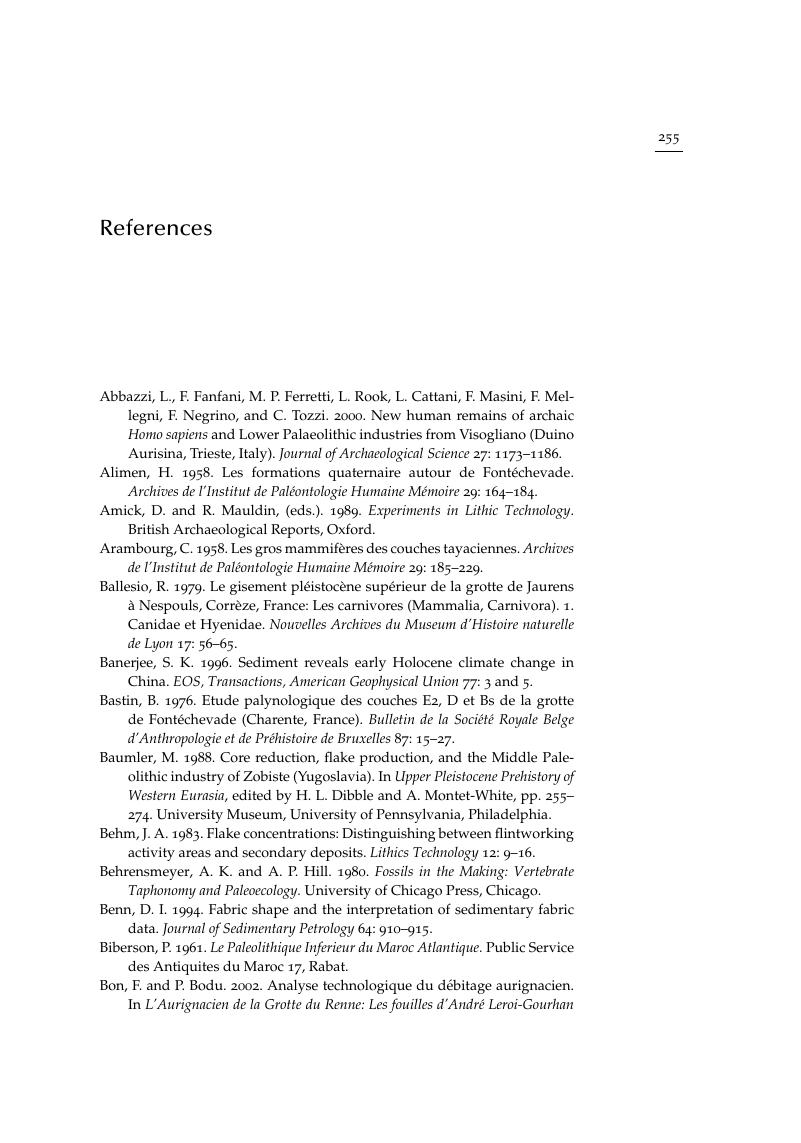References
Published online by Cambridge University Press: 03 May 2010
Summary

- Type
- Chapter
- Information
- The Cave of FontéchevadeRecent Excavations and their Paleoanthropological Implications, pp. 255 - 268Publisher: Cambridge University PressPrint publication year: 2008



